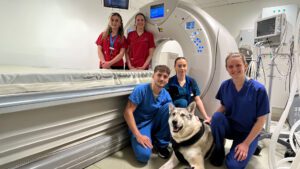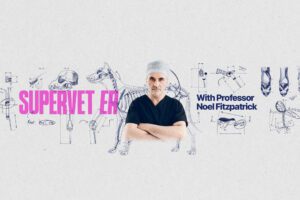Helping dogs take arthritis in their stride
If your dog or cat has arthritis, you might be wondering if stem cell therapy can help. The answer is usually yes, but only if the joint isn’t too badly damaged.
While stem cells are part of what’s called “regenerative medicine,” for arthritis, they mainly reduce inflammation (swelling), therefore reducing pain — they don’t grow back cartilage. At Fitzpatrick Referrals, stem cells are sometimes also used to grow bone or cartilage for other conditions.
Fitzpatrick Referrals offers a full range of treatments for osteoarthritis, including medicine, physiotherapy, hydrotherapy, stem cells, and surgery. For example, we offer special elbow surgeries that aren’t available anywhere else in the world. Our on-site laboratory is led by Dr Anita Sanghani-Kerai, a PhD expert in stem cell research, and we use our own unique method to prepare the stem cells.
We strongly believe that pet owners should get a balanced and complete explanation of all treatment options based on the type and severity of their animal’s arthritis. No case should be limited to just one kind of treatment — all options should be discussed honestly, with no bias.
What are stem cells and how can they help?
Stem cells can develop into different kinds of tissue. For many years, scientists have studied how they can be used to help wounds heal and reduce pain from bone and joint diseases.
Skeletal stem cells are special cells found in different parts of the body, like muscles, bone marrow, and fat. Most of the time, stem cells used in treatment come from fat tissue. These cells are called adipose-derived mesenchymal stem cells (AdMSCs). At Fitzpatrick Referrals, we also sometimes collect stem cells from the bone marrow (BMSCs).
For the treatment to work well for osteoarthritis, stem cells must be collected properly from the patient’s fat tissue, and the right mix of other helpful substances like blood platelets (PRP) and lubricants needs to be added. We’ve treated hundreds of dogs this way (cats get severe arthritis less often), and we have found that stem cells taken from the patient’s own body work better than those from other animals or commercially available sources. This type of stem cells is called autologous stem cells (from the same animal), while allogeneic means from another animal of the same species.
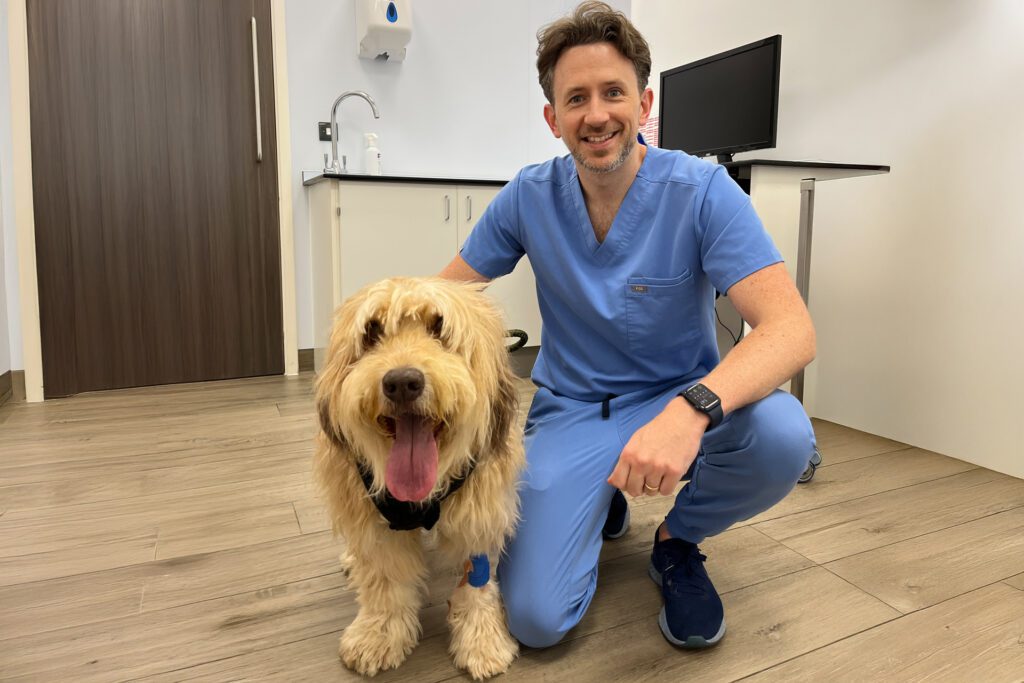
What stem cell treatments are available at Fitzpatrick Referrals?
We usually collect stem cells from fat and sometimes we also use stem cells from the bone marrow or cartilage.
For example, if a dog has a damaged elbow joint, we might do a surgery called an osteotomy to reduce pressure on the joint. Then, we inject bone marrow stem cells in that joint area to help grow new cartilage. This cartilage isn’t the same as normal joint cartilage—it’s a type of scar tissue called fibro-cartilage. We can also use stem cells to help repair broken bones that haven’t healed properly or fill in gaps in cartilage caused by a condition called osteochondritis dissecans.
In our laboratory, we grow stem cells that reduce inflammation and inject them into joints. We often use a mix of three things:
- Fat-derived stem cells
- Platelet-rich plasma (PRP), which contains healing growth factors.
- A joint lubricant gel like Arthramid™ or Hy-50™
These gels help cushion the joint and give the stem cells a structure to stick to, so they can release healing substances slowly. The stem cells and platelets together release natural chemicals that reduce inflammation, ease pain, and help dogs have a better quality of life.
We check how well the treatment is working by measuring your dog’s movement on a special walkway that tracks how they walk and how they distribute their weight across their legs.
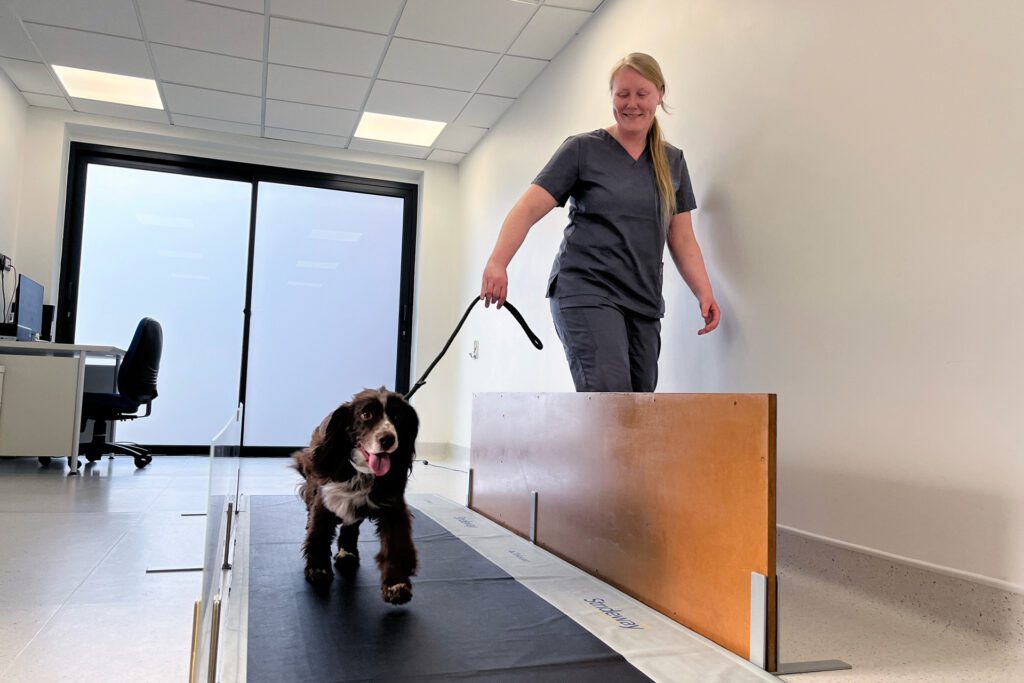
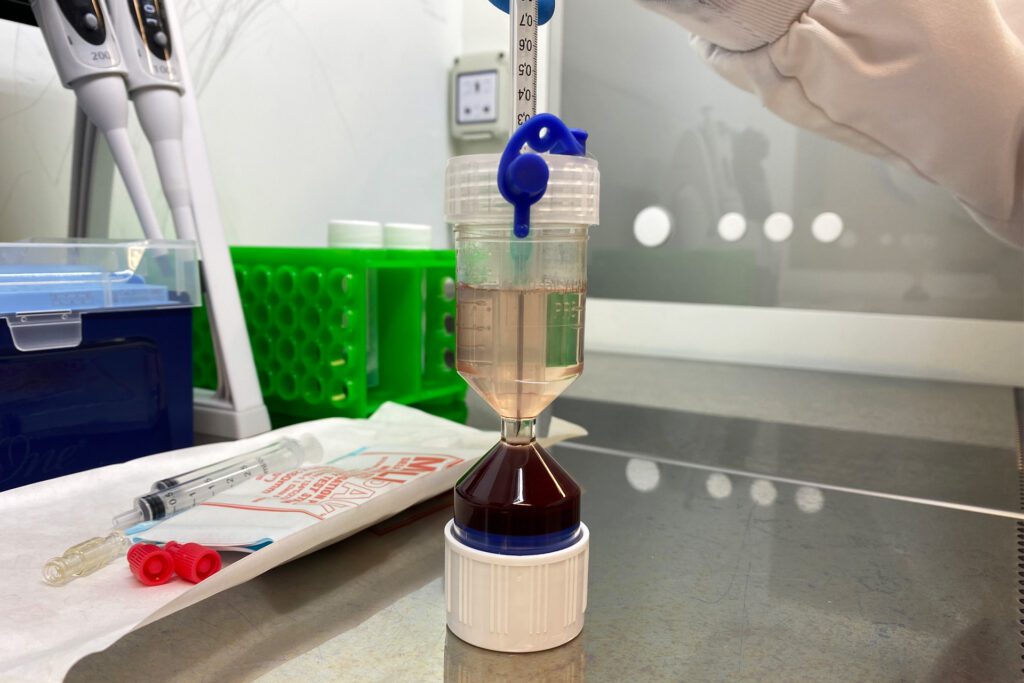
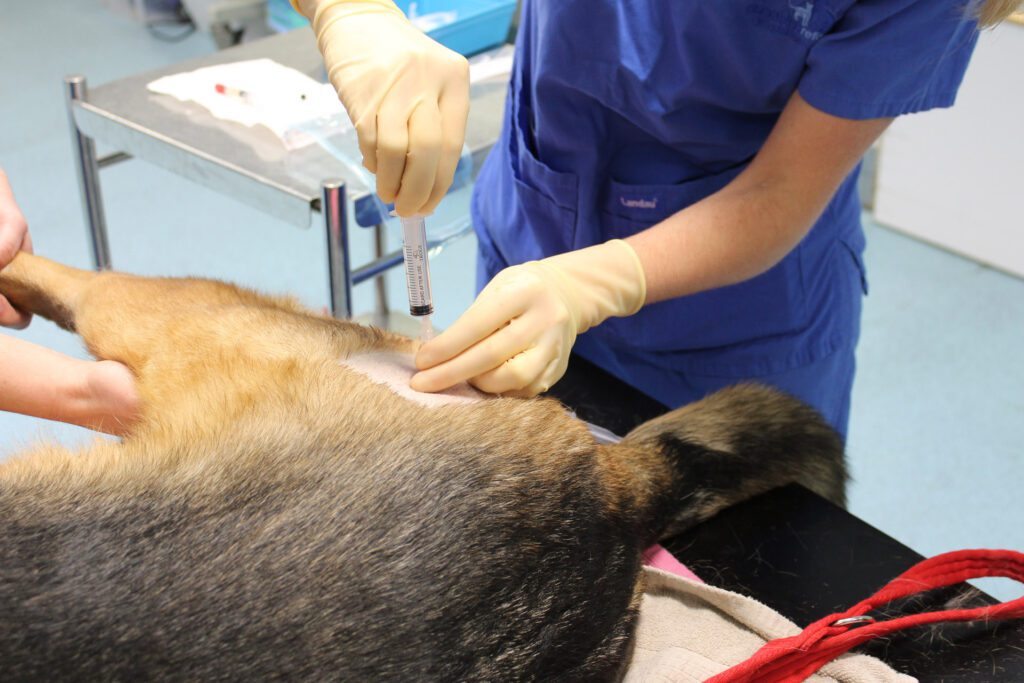
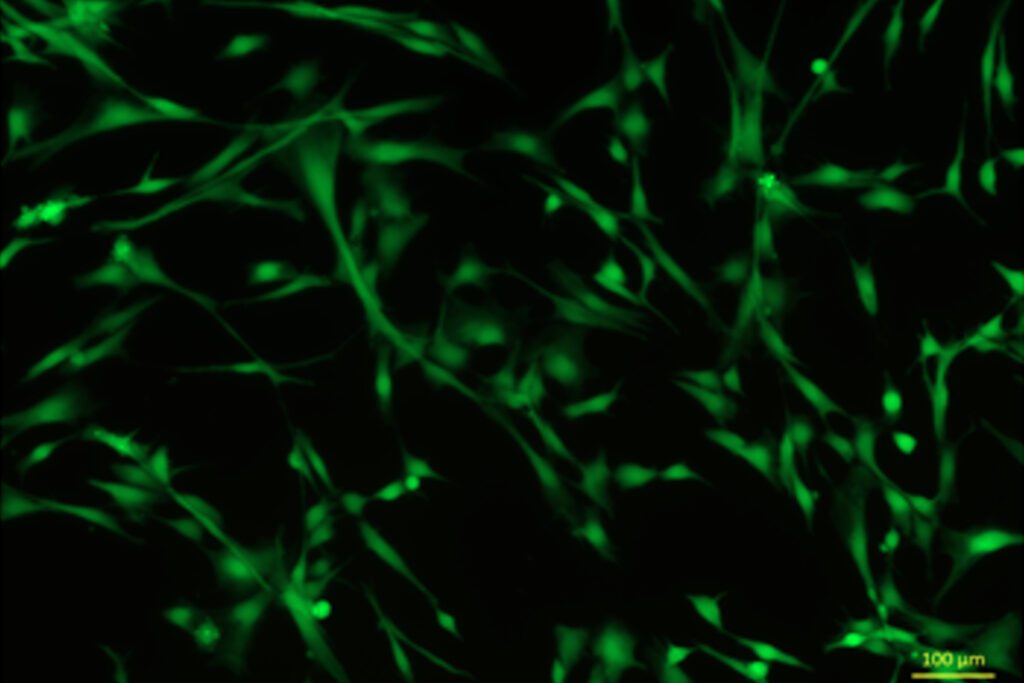
Which patients benefit from anti-inflammatory stem cell therapy?
This treatment is most helpful for:
- Dogs with moderate to severe osteoarthritis who are not having surgery or don’t respond well to medicine.
- Dogs having surgery for joint problems, when stem cells might help reduce pain and support healing. It’s often used in younger dogs to help slow down the disease.
Why choose Fitzpatrick Referrals for stem cell therapy?
Fitzpatrick Referrals has been using stem cell therapy since 2017 and is one of the leaders in this area. We carefully test the stem cells and platelets we use, and we’ve published research showing they can reduce pain and improve movement and quality of life in dogs with arthritis.
We only use your dog’s own cells (this is called autologous therapy), which lowers the risk of side effects and makes the treatment more effective.
At Fitzpatrick Referrals, we give you a full range of treatment options—from medical and physical therapy to joint injections and surgery. We believe in being honest and giving you all the facts, so you can choose what’s best for your dog. While arthritis can’t be cured, we aim to manage it as a lifelong condition and help your dog live as comfortably and actively as possible.
Video: 10-year-old Cocker Spaniel Bobby visits Fitzpatrick Referrals annually for stem cell therapy and PRP injections, which have an anti-inflammatory effect on his elbow osteoarthritis and help manage his bilateral elbow disease. This video was filmed on his third annual visit.
QUESTIONS
FAQs
Here is a list of the common stem cell therapy questions we receive at Fitzpatrick Referrals – if your question is not answered here, please contact us with your query and we will be happy to help!
What conditions can stem cells help treat?
When treating dogs with osteoarthritis, stem cells are often used to help with joint problems caused by:
1. Developmental elbow disease – elbow problems that develop as the dog grows (previously called elbow dysplasia)
2. Hip dysplasia – a condition where the hip joint doesn’t form properly
3. Partial tears of the cranial (anterior) cruciate ligament of the stifle (knee), often in association with surgery
4. Osteochondritis dissecans (OCD) – a condition that causes joint pain and leads to arthritis in the hock, stifle (knee), elbow, or shoulder
5. Osteoarthritis of any joint caused by trauma
What does stem cell therapy for osteoarthritis involve?
First, one of our senior orthopaedic vets will carefully assess your dog (or cat) and discuss the best treatment options with you. We treat every patient as an individual and respect that every owner deserves to choose the path that suits them best.
At this first appointment, we will assess your dog or cat’s lameness. This means we check how your dog walks and how they distribute their weight across their legs. This gives us a starting measurement which we can use later to judge whether the treatment has improved lameness over time.
If your dog is a good candidate for stem cell therapy, they will be admitted to the hospital for a short general anaesthetic. During this, we take a small sample of fat from under the skin. Most patients are able to go home the same day.
We then grow the stem cells from the fat sample in our on-site laboratory, which usually takes around 14 to 20 days.
Once the cells are ready, we’ll book you in for the treatment. The stem cells are injected directly into the affected joint. This is normally done under sedation. We shave a small patch of fur at the injection site, and your dog can usually go home within 2 to 3 hours.
Is stem cell therapy painful?
Stem cell treatment is done under sedation or a short general anaesthetic. This helps the vet keep the joint still and prepare the area for the injection. The stem cells are injected directly into the joint (called an intra-articular injection), so your dog won’t feel anything during the procedure. Afterward, the joint may feel a bit sore, swollen, or stiff for a few days.
What is PRP?
PRP stands for platelet-rich plasma and it is obtained from blood. Platelets contain natural anti-inflammatory signals that help reduce pain.
It can be used on its own as a joint injection for arthritis.
To prepare PRP, we take a blood sample from your dog and spin it in a machine to collect the platelets. After examining your dog, we’ll talk to you about which treatment is best. In most cases, our experience shows that a combination of stem cells and PRP is more effective than PRP on its own.
How much does stem cell therapy cost?
The cost varies depending on how many joints are being treated. A guide price is approximately £3,000, which includes:
- The first consultation
- Anaesthesia to collect the fat sample
- Growing the stem cells in our laboratory
- A follow-up visit with sedation
- One injection of stem cells and PRP
Hydrogel (if used) is extra.
Each repeat injection of stem cell therapy and PRP, if needed, would be approximately £872.50, which includes a re-check appointment, preparing their stem cells in our laboratory, sedation, and the injection. Hydrogel would cost extra and is optional.
Why do the repeat stem cell therapy visits cost significantly less?
The price difference of the repeat treatment is due to us already having your dog’s stem cells stored in our laboratory and not needing to do another fat harvest under general anaesthesia, with only a sedation required to administer it. The repeat treatment cost includes preparing their stem cells in our laboratory, the recheck appointment, sedation and injection.
Can I use pet insurance to pay for treatment?
Most pet insurance policies will cover this treatment, but it’s best to check with your provider before starting the treatment. Our finance team can help you with this before your appointment.
Will any imaging or scans be needed e.g. x-rays / CT?
This depends on your dog or cat’s individual case, medical history, and what we find during their consultation. If they have had previous surgery, treatment for their condition, or if we spot anything that needs a closer look during their examination, your clinician may suggest additional imaging (such as X-rays or a CT scan) to help us fully understand their needs and plan the best care.
In some cases, no extra scans are needed at all (especially if they have already been done by your local vet). If stem cell therapy isn’t the most suitable option, your clinician will explain why and guide you through the alternatives, so you can feel confident your dog or cat is getting the care that’s right for them.
How soon will it start working?
Every dog is different, but we would expect to see improvement within two weeks of treatment.
Is there proof that stem cell therapy works?
How long does stem cell therapy last?
It depends on the dog and how advanced the arthritis is. Most dogs feel better for 6 – 12 months. Some need repeat treatment sooner.
With your permission, we store your dog’s stem cells in our lab for future repeat injections. We just need 3 weeks’ notice to get the next dose ready.
Does stem cell therapy cure arthritis?
Sadly, there’s no cure for arthritis, but stem cells can help manage the symptoms. Our team will guide you on the best treatment plan to keep your dog comfortable for as long as possible. We’ll also work closely with your regular vet.
Are there any side effects of stem cell therapy?
Side effects are rare. After the injection, your dog might feel a bit sore or stiff for a few days. We usually give paracetamol alongside their usual medication to help.
Like any sedation or anaesthetic, there is a small risk, and while we take care to keep everything sterile, there’s a small chance of infection at the injection site. We take every precaution to reduce risks.
Does Fitzpatrick Referrals offer allogeneic (donor) stem cells?
No, we only use a patient’s own (autologous) stem cells, as we believe this provides the safest and most effective treatment option.
Using a patient’s own stem cells means there is a low risk of infection or cell rejection. Disadvantages include limitations in the availability and quality of the patient’s own cells. However, with an established stem cells protocol, and an onsite laboratory at Fitzpatrick Referrals, we have treated nearly 500 osteoarthritis patients with autologous stem cells, with no reported issues with quality and availability of the stem cells. If stem cell therapy is not an option due to medical reasons or the patient is unable to have a fat harvest, we offer other conservative treatment options such as PRP (platelet-rich plasma), HA (hyaluronic acid) and tailored rehabilitation programmes.
Allogeneic treatments may have a greater availability and diversity, but require matching and immunosuppressive measures to reduce the risk of rejection. Allogeneic treatments may also pose ethical and safety concerns, such as the risk of transmissions of infections or diseases.
How often do patients need repeat stem cell therapy injections?
The frequency is very much dependent on the individual patient and how they respond to the stem cell therapy, as well as how advanced their arthritis is. Most dogs feel better for 6-12 months, with some needing repeat treatment sooner.
How often are fat harvests needed for stem cell therapy?
Following their initial fat harvest, we freeze six vials of stem cells, with one vial being used per stem cell treatment visit. The frequency of needing to repeat the fat harvest depends on how well the individual patient is doing and how often the patient returns for their repeat injections. For example, for a patient having annual stem cell therapy injections the six vials would be used up in five years. For a patient having injections every six months they would last 2.5 years. On average, at Fitzpatrick Referrals repeat fat harvests are done every 4-5 years.
Would you consider a 13-year-old dog, or are they too old?
Yes, a 13-year-old dog can be considered for stem cell therapy. We have published data to show the quality of stem cells from fat tissue is not affected by age. To be considered for stem cell therapy for osteoarthritis, it depends on the stage and advancement of the disease rather than age. At Fitzpatrick Referrals, we have treated young and old dogs with stem cells for osteoarthritis.
We understand surgical options can be very limited with older dogs and therefore managing pain and comfort becomes imperative. Stem cell therapy helps with reducing inflammation and discomfort, and at Fitzpatrick Referrals, we also offer other intra-articular injections as well as hydrotherapy and physiotherapy. A comprehensive treatment plan can be discussed with the surgeon during the initial appointment.
Can my own vet do this treatment?
Stem cell therapy needs a special laboratory to prepare and grow the cells in an aseptic (sterile) setting. We use our own tested method to make sure your dog’s cells are the best quality. Once the cells are ready, they only stay usable for a few hours, so they must be injected straight away.
For best results, we recommend having the treatment done by our orthopaedic team here at the clinic.
If you live far away, we can help you find great local places to stay. Your dog can also stay with us overnight – our caring team is here 24/7, and we offer large, comfortable kennels.
Where can I learn more about stem cell therapy for dogs?
If you’d like to learn more, we’ve recorded a lecture on regenerative medicine and stem cell therapy with Senior Clinician Dr James Guthrie. Although it was originally created for veterinary professionals, many non-clinical viewers have also found it informative. You can watch it here on YouTube.
How do I book my dog or cat in for stem cell therapy?
Stem cell therapy is available to all dogs and cats at Fitzpatrick Referrals. We’re always happy to help.
Just ask your vet to send a referral to us. It’s quick and simple using our referral form. Once we receive it, we’ll arrange your appointments at a time that suits you.
Stem your pet’s arthritic pain with stem cell therapy
Get in touch
If you have any questions about stem cell therapy not answered here, please fill out this form.
Stem cell therapy enquiry form
15 minute read
In this article

